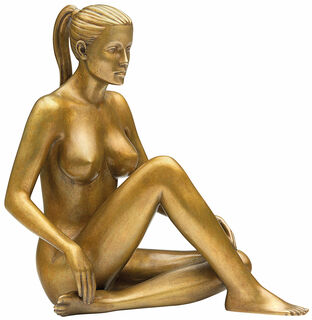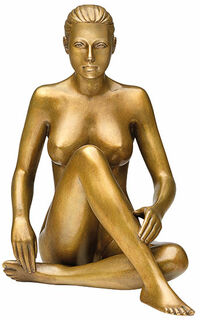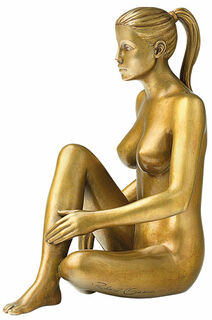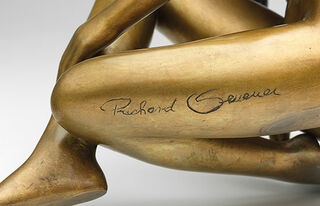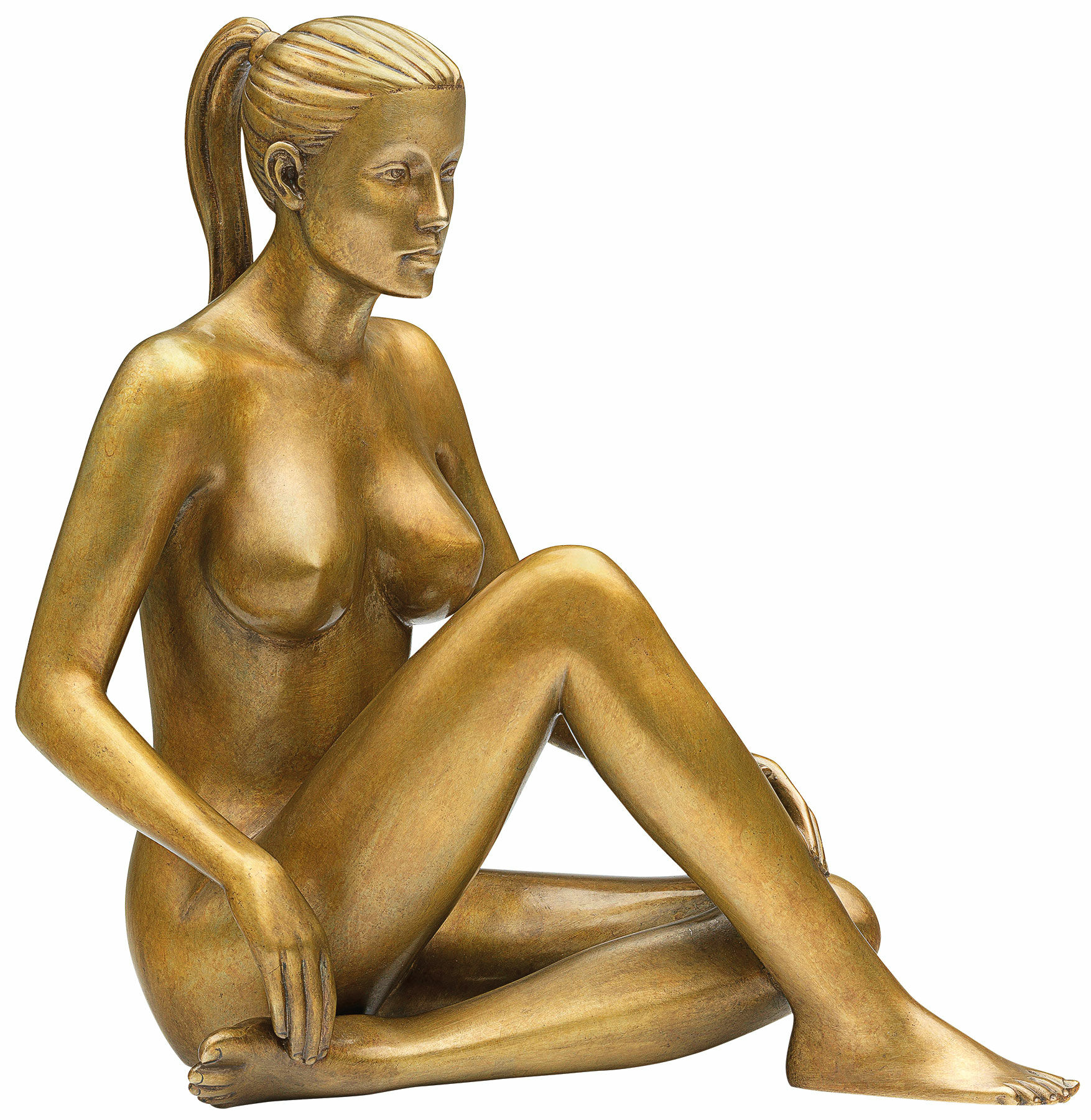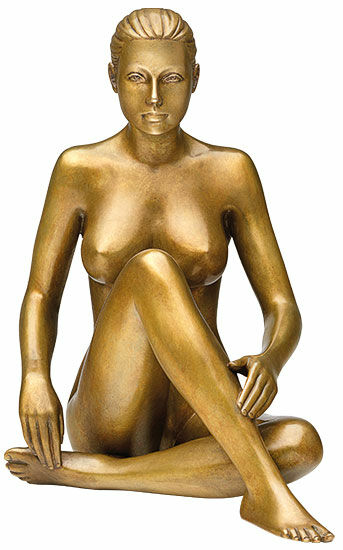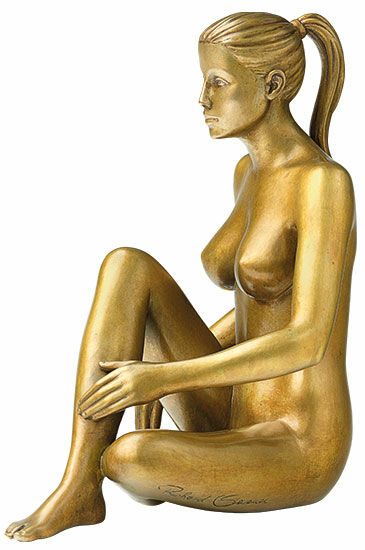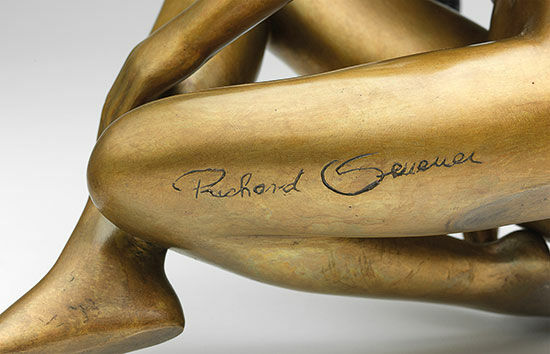Sculpture "Grace", bronze
Sculpture "Grace", bronze
Quick info
ars mundi Exclusive Edition | limited, 49 copies | numbered | signed | foundry hallmark | certificate | bronze | polished | size 28.5 x 17 x 24.5 cm (h/w/d) | weight 7.5 kg
Detailed description
Sculpture "Grace", bronze
Bronze sculpture, cast using the Lost-Wax-Process, polished by hand. Cast directly from the original. Limited edition of 49 copies, numbered, signed and hallmarked with the foundry stamp. With numbered certificate of authenticity and limitation. Size 28.5 x 17 x 24.5 cm (h/w/d). Weight 7.5 kg. ars mundi Exclusive Edition.
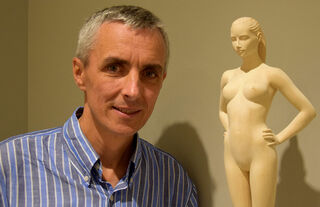
About Richard Senoner
The South Tyrolean sculptor Richard Senoner has made nudes the focus of his work and perfected the depiction of female bodies in over 15 years. His wooden sculptures show women in various sensual poses. "The nude - the classic motif in art par excellence - gives me the greatest possible scope in my work as a sculptor to translate expressiveness, aesthetics and harmony. My primary concern is to depict the human being in various thematic aspects," he says.
Senoner bases the design of his figures on the real forms of the human physique: "A detailed and precise elaboration characterises my works," says the artist. In addition to female nudes, Senoner's portfolio includes other motifs, especially sacred art.
Senoner mainly uses the wood of the linden tree for his nude sculptures. The sculptures can be up to 70 cm in size. In order to show off the fine grain of the wood and so that the sculptures do not lose their natural appearance, he does not use any colours or glazes. The perfect shaping in combination with the natural material is what makes Senoner's works so impressive.
Richard Senoner was born in 1967 and grew up in Ortisei in Val Gardena. His father, and later teacher, was also a sculptor, so he was born into the art of working with wood. In 1989, he completed his master's degree. Senoner has been a freelance artist since 1990 and has been working with the Meisel Gallery in New York since 2014.
An alloy of copper with other metals (especially with tin) used since ancient times.
When casting bronze, the artist usually applies the lost-wax technique which is dating back more than 5000 years. It's the best, but also the most complex method of producing sculptures.
First, the artist forms a model of his sculpture. It is embedded in a liquid silicone rubber mass. Once the material has solidified, the model is cut out. The liquid wax is poured into the negative mould. After cooling down, the wax cast is removed from the mould, provided with sprues and dipped into ceramic mass. The ceramic mass is hardened in a kiln, whereby the wax flows out (lost mould).
Now we finally have the negative form, into which the 1400° C hot molten bronze is poured. After the bronze had cooled down, the ceramic shell is broken off and the sculpture is revealed.
Now the sprues are removed, the surfaces are polished, patinated and numbered by the artist himself or, to his specifications, by a specialist. Thus, each casting becomes an original work.
For lower-quality bronze castings, the sand casting method is often used which, however, does not achieve the results of a more complex lost-wax technique in terms of surface characteristics and quality.
Graphic or sculpture edition that was initiated by ars mundi and is available only at ars mundi or at distribution partners licensed by ars mundi.
Term for an art object (sculpture, installation), which is produced in multiple copies in a limited and numbered edition according to the artist‘s will.
Artist's multiples have been called the most accessible and affordable art on the market.
A plastic work of sculptural art made of wood, stone, ivory, bronze or other metals.
While sculptures from wood, ivory or stone are made directly from the block of material, in bronze casting a working model is prepared at first. Usually, it is made of clay or other easily mouldable materials.
The prime time of sculpture after the Greek and Roman antiquity was the Renaissance. Impressionism gave a new impulse to the sculptural arts. Contemporary artists such as Jorg Immendorf, Andora, and Markus Lupertz also enriched sculptures with outstanding works.

